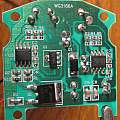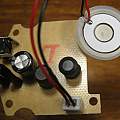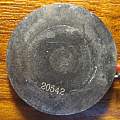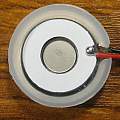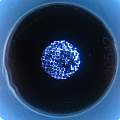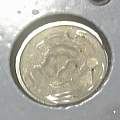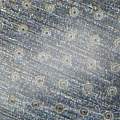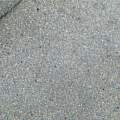Started 7th January 2019
I bought "D20mm 113KHz Ultrasonic Mist Maker Atomizing Fogger Ceramic Humidifier 3.7-12VRA".
The interesting thing is that the transducer appears to be solid to the naked eye but actually has an area of lots of small holes.
The holes are easily seen by shining a bright light through the disc as in photo 5, but under normal lighting they do not look as clear to the eye as photo 3. They're much more apparent on the bottom of the transducer (photos 3 and 7) than the top (photos 2, 4, 5 and 8). Photos 7 and 8 are from a microscope and are about 1 mm across.
The MC34063A, MC33063A are Step−Up/Down Inverting Switching Regulators.
The video shows the effect of dropping a small amount of water on the disc, interesting patterns of ripples form before the water turns to mist.
The disc is not designed to be used like this, it should either float on water or be fed via capillary, see Big Clive - USB powered water fog generating humidifier. With schematic
From the microscope photo one might determine the hole diameter as 0.01 mm and take that as the size of the resulting water droplets. Roughly the water vapour reaches a height of 0.3 m. Can this provide any information about how much the disc moves? Taking acceleration due to gravity as `g`, mass of the droplet as `m`, height `h` and velocity `v`, equating potential and kinetic energy.
`mgh=1/2mv^2`
m cancels out (the old thing about feathers and lead falling at the same speed, but rising) and:
`v=sqrt(2gh)`
about 2.4 m/s, however the disc is vibrating at about 105 Hz giving an amplitude of about 10-5 m which is not too far from the values given in Calculating displacement amplitude of ultrasonic power transducer
